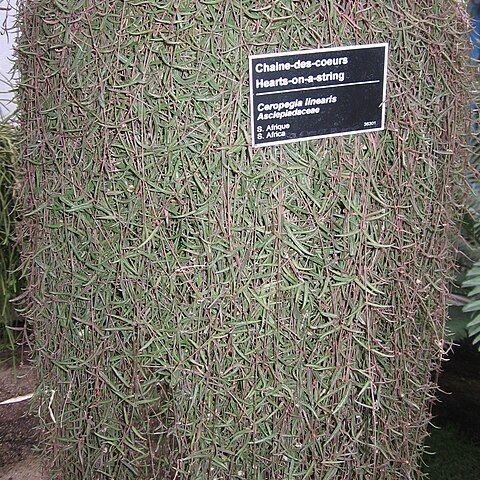Climbing or scrambling geophytic, slender herbaceous vine. Stems 1 or 2, perennial or annual, up to 2 m long, produced from a discoid tuber. Leaves ovate-lanceolate to orbicular, 8.5-50.0 x 1.5-7.0 mm, base ± subcordate; petioles up to 10 mm long. Inflorescence: cyme with 2 or 3(-5) flowers; peduncles 6-13 mm long; pedicels 3-6 mm long. Corolla tubular and cylindrical, erect, straight, ± 25 mm long, fused for 16-19 mm, small ovoid inflation, 2-3 mm in diam., mouth marginally inflated; lobes erect, ± 4 mm long, linear, slightly spathulate at apex, 6.5-8.0 mm long, connivent and fused apically, forming an oblong cage over tube mouth, margins revolute, ciliate, lobes pilose; colour variable. Corona: interstaminal corona lobes adnate, widely U-cleft and channel-like almost to bottom, forming 2 pockets just behind these; staminal corona lobes fused basally to interstaminal corona, free above the connivent upper portions, apex flexed out.
Like C. africana but cage formed by petals nearly uniformly broad from mouth of tube to truncate apex and with blackish margins.
A creeping and climbing herb. It is often grown as a hanging basket. The leaves can be 3-4 cm long.

